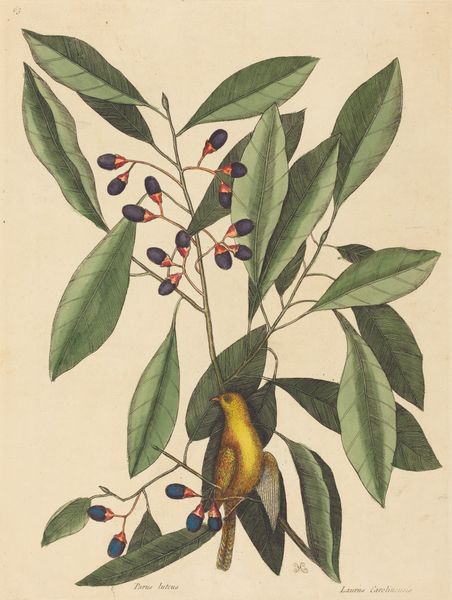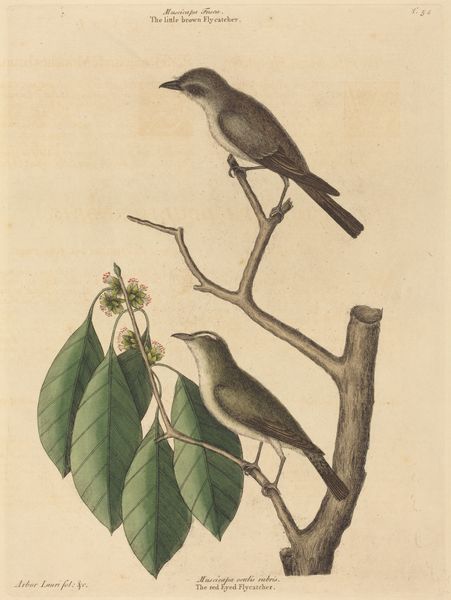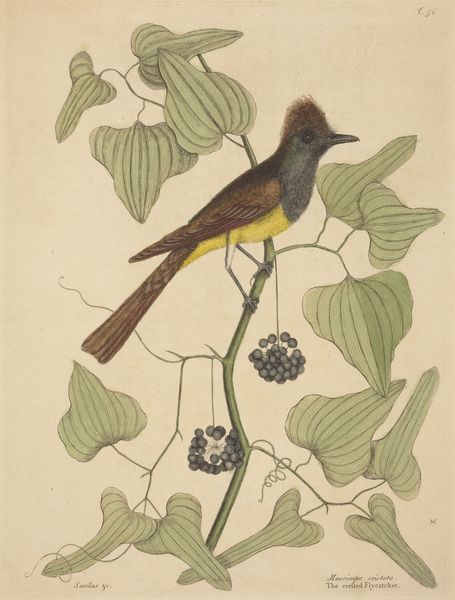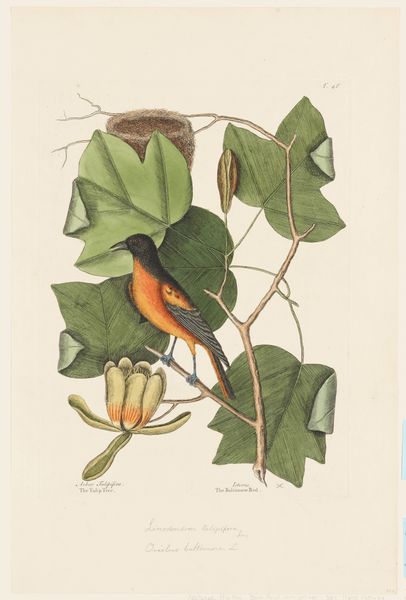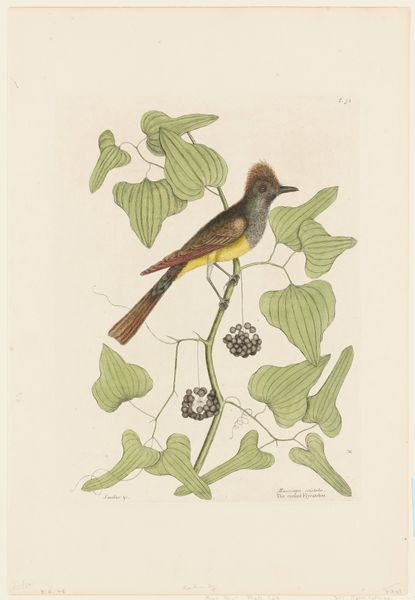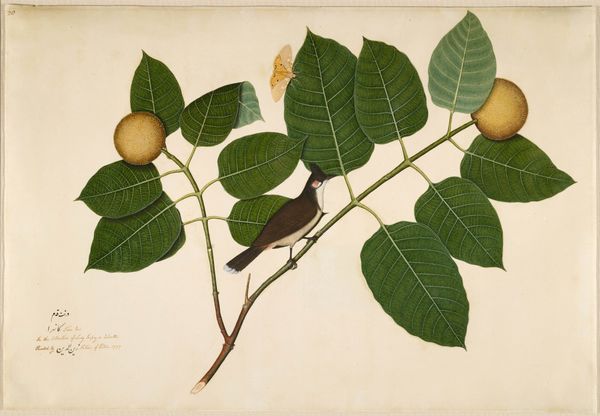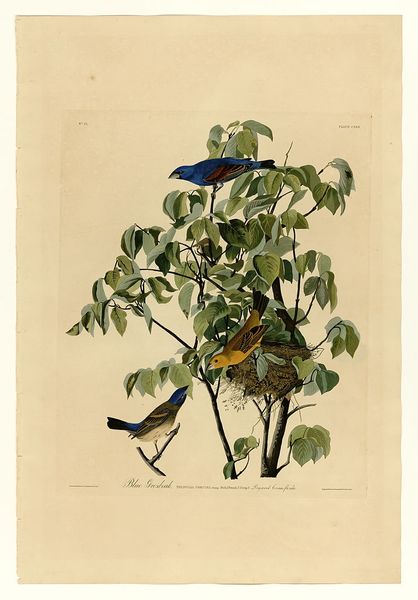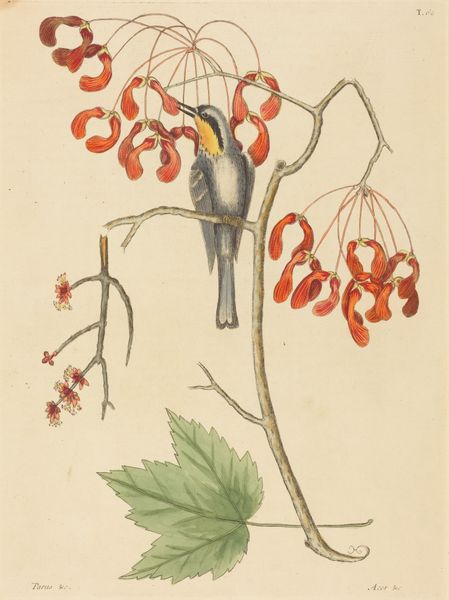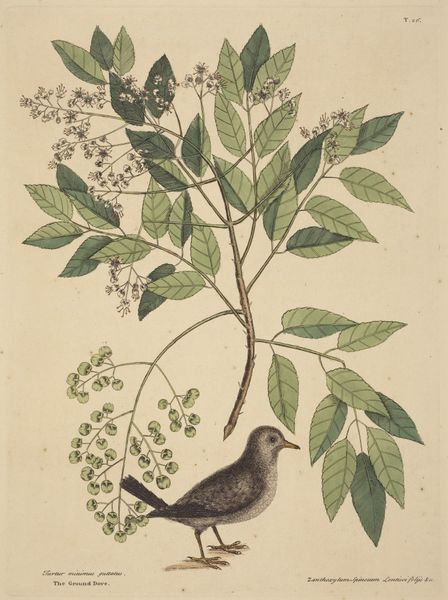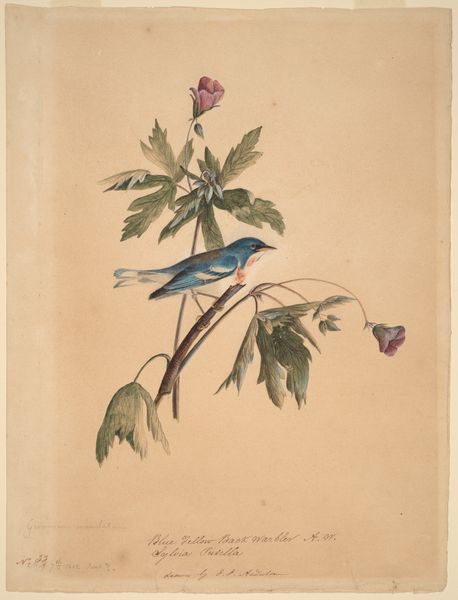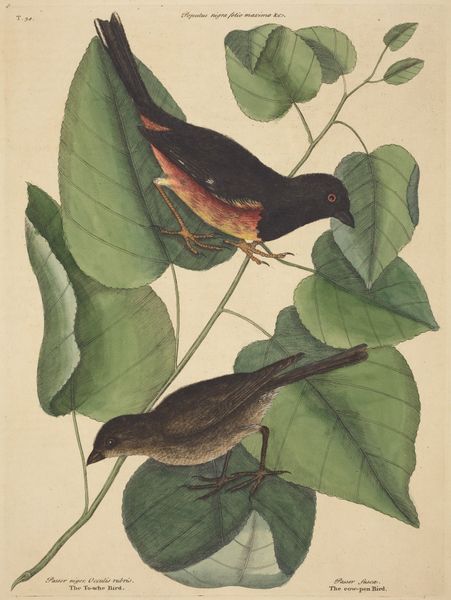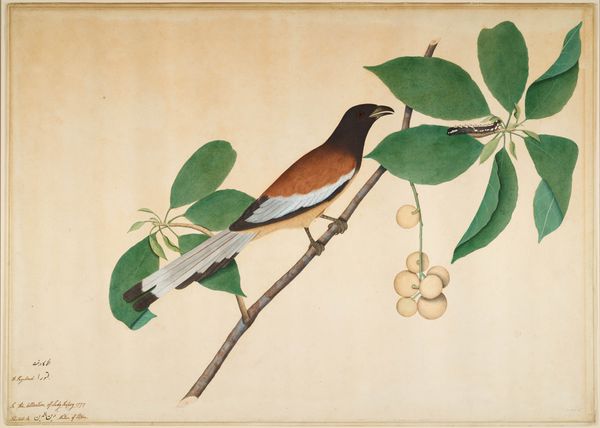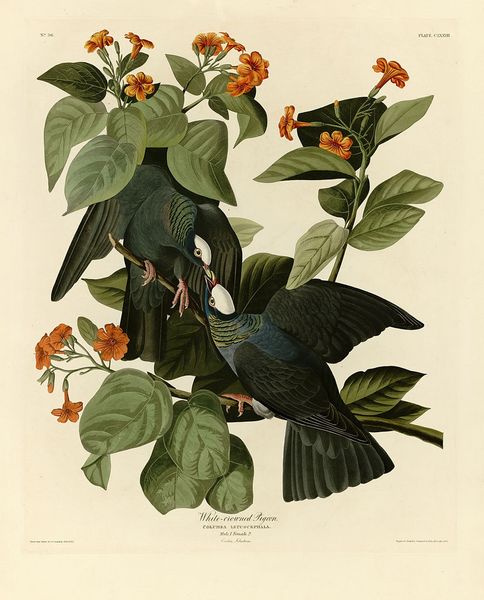
drawing, print, watercolor
#
portrait
#
drawing
# print
#
botanical illustration
#
watercolor
#
botanical drawing
#
line
#
watercolour illustration
#
botanical art
Dimensions: plate: 35.2 x 26.2 cm (13 7/8 x 10 5/16 in.) sheet: 50.6 x 34.8 cm (19 15/16 x 13 11/16 in.)
Copyright: National Gallery of Art: CC0 1.0
Editor: So, this is Mark Catesby's "The Finch Creeper (Parus americanus)," possibly from between 1731 and 1743, a watercolor and print combination. It has such a serene quality. What do you see in this piece? Curator: Immediately, I see a celebration of the New World, observed through the symbolic lens of natural history. Consider the careful rendering; it isn’t just about scientific accuracy. It’s about imbuing the unfamiliar—the exotic—with meaning. What does the presence of the finch itself evoke for you? Editor: Freedom, maybe? Birds often symbolize that... Curator: Exactly! And freedom connects to concepts of the untouched wilderness that Europeans would have been very excited to discover. And look at how it perches amongst the flowering branches, seemingly comfortable and familiar. Editor: Almost like a portrait of symbiosis. Curator: Precisely. The detailed botanical illustration is intentional. Each plant had possible medicinal and commercial purposes, suggesting wealth. Catesby carefully studied his subjects and meticulously preserved them for the scientific community back in Europe. Consider the colors, too – how they define the visual weight of the leaves compared to the delicate, bell-shaped flowers. What do these choices convey, do you think? Editor: It feels like a visual record, very informative, like Catesby is cataloging these American species to educate people about these new discoveries. Curator: Indeed! Every choice – the pose of the bird, the angle of the branch – adds to the painting's scientific integrity and reinforces our evolving perceptions about ecology and the burgeoning natural sciences of the 18th century. Editor: This deeper dive into the symbolism adds a rich layer to what initially seemed like just a pretty picture of a bird and flowers. Curator: Yes, this symbology really reflects our changing understanding of this era!
Comments
No comments
Be the first to comment and join the conversation on the ultimate creative platform.
